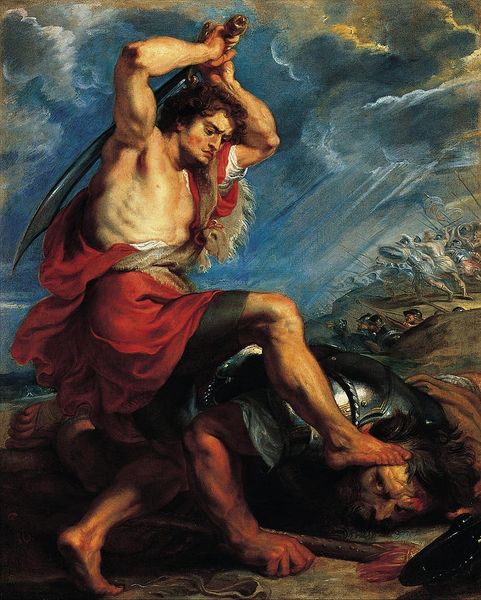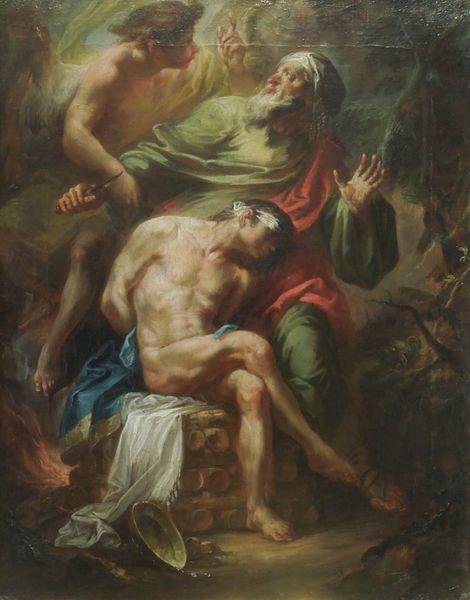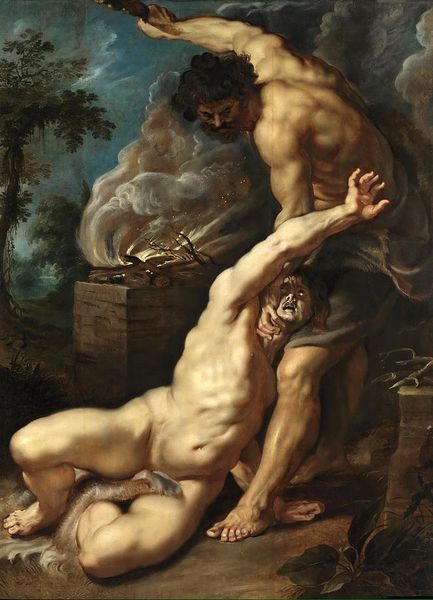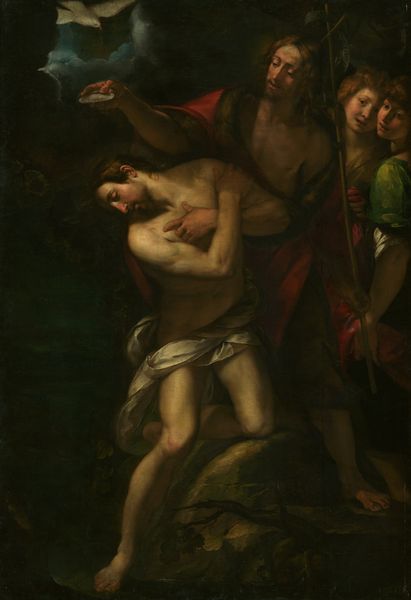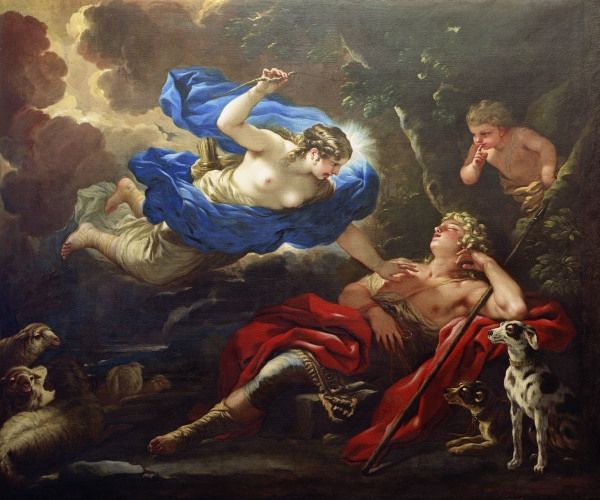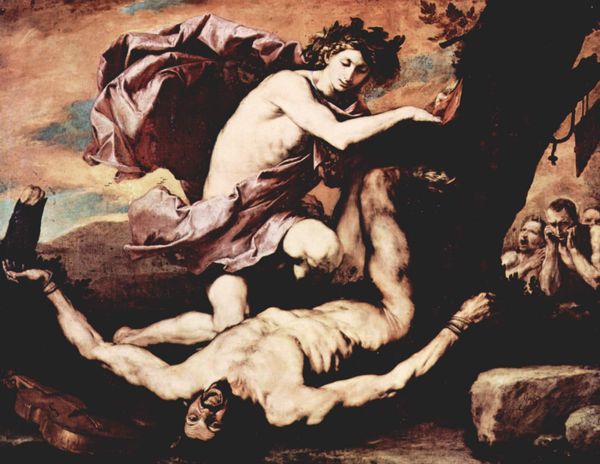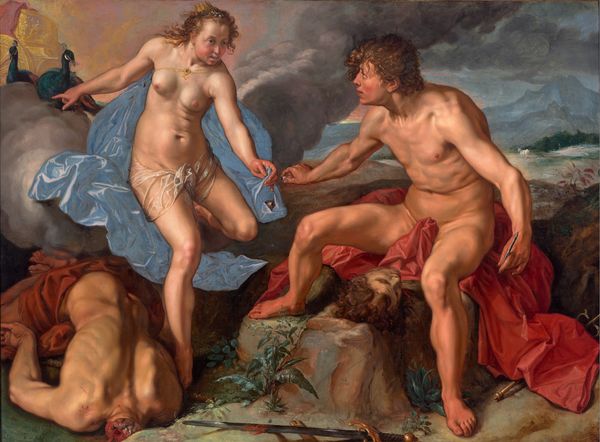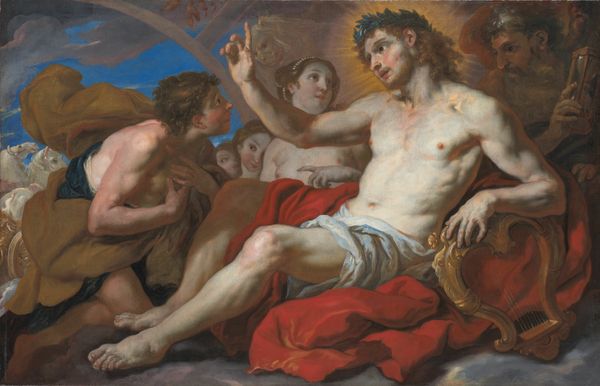
oil-paint
#
baroque
#
oil-paint
#
landscape
#
figuration
#
oil painting
#
mythology
#
history-painting
Copyright: Public domain
Jan Cossiers painted 'The Death of Hyacint' to capture a moment of intense grief and beauty rooted in classical myth. Consider how Cossiers, a 17th-century Flemish artist, engaged with stories of male love and tragedy amidst a society with rigid norms around gender and sexuality. The painting depicts the god Apollo cradling the dying Hyacinth, struck by a discus. Look at Apollo's androgynous beauty and Hyacinth's vulnerable pose. These render the scene with complex layers of desire and mourning. The story of Hyacinth allowed artists to explore homoerotic themes, often under the guise of mythological narrative. Cossiers uses the drama of death to explore themes of love and loss, but also to hint at the forbidden. The emotionality of the scene—Apollo’s anguish, Hyacinth’s limp body—invites us to reflect on the intersections of love, desire, and mortality. 'The Death of Hyacint' serves as a poignant reminder of the ways in which personal stories can challenge the boundaries, and engage with the social and cultural narratives of their time.
Comments
No comments
Be the first to comment and join the conversation on the ultimate creative platform.

